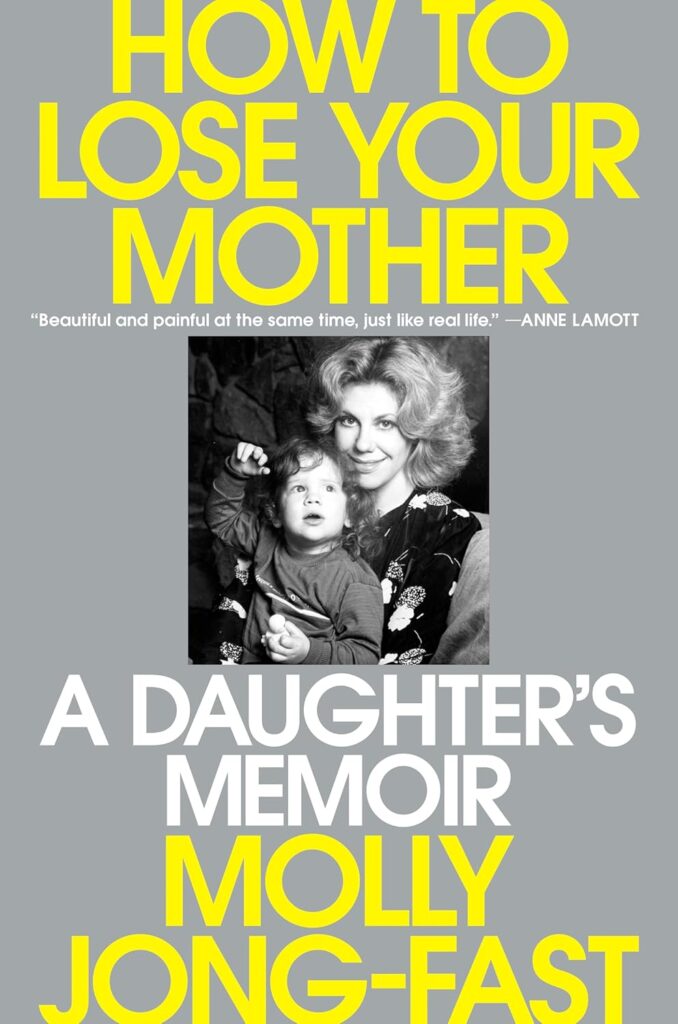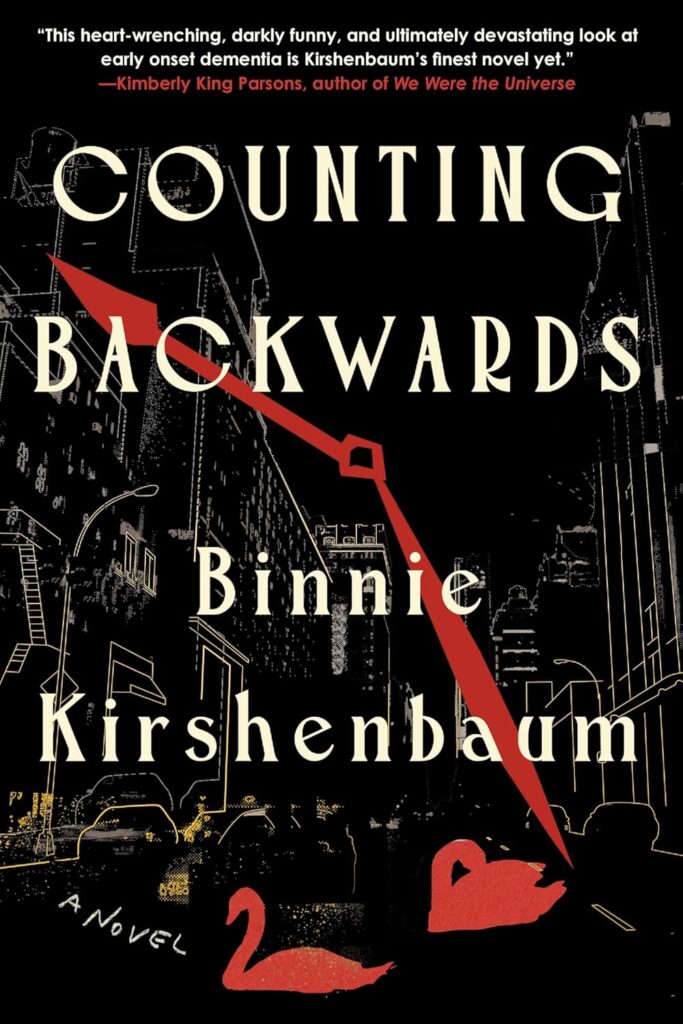Oscar Wilde is one of the most fascinating literary figures of the 19th century. Known for his biting wit, sharp social critiques, and a knack for stirring up scandal, his works remain as entertaining and thought-provoking today as they were over a century ago. In this post, I’ll walk you through some of Wilde’s best books, offering a closer look at the stories, characters, and bold ideas that cemented his place in literary history. Whether you’re new to Wilde or revisiting his classics, this guide will help you discover what makes his writing so unforgettable.
Table of Contents
The Picture of Dorian Gray: A Masterpiece of Aestheticism
Oscar Wilde’s only novel, The Picture of Dorian Gray, holds a unique space in literary history. It’s a tale that combines opulent prose, scandalous themes, and deep philosophical questions about art, morality, and the human soul. Let’s uncover what makes this book a literary gem and one of the most discussed works among Oscar Wilde books.
Plot Summary and Key Themes
At its heart, The Picture of Dorian Gray tells the story of a strikingly handsome young man, Dorian Gray, who becomes enthralled by his own beauty after famed artist Basil Hallward paints his portrait. Influenced by the charming but morally dubious Lord Henry Wotton, Dorian embraces a life of hedonism and indulgence. He wishes that his portrait would age and bear the scars of his sins while he remains forever youthful. Unbelievably, this wish comes true.
But as the portrait grotesquely morphs to reflect Dorian’s moral corruption, his emotional and psychological state spirals out of control. The novel explores critical themes such as:
- Hedonism and Pleasure: Dorian’s pursuit of gratification leads to a life devoid of real meaning or joy.
- Eternal Youth and Beauty: Society’s obsession with external beauty, mirrored in our modern world, plays a central role.
- The Consequences of Immorality: The degeneration of Dorian’s soul—as depicted in the painting—is a haunting reminder of the cost of unchecked ambition and vanity.
For a breakdown of these themes, you can explore deeper here.
The Controversy Surrounding its Publication
When first published in 1890, The Picture of Dorian Gray faced severe backlash. Accusations of immorality and decadence swirled, as Victorian critics found Wilde’s unapologetic exploration of taboo topics shocking. Some passages were deemed too risqué, prompting Wilde to revise and expand the novel for its 1891 edition to include a preface defending art’s role as an amoral entity.
The uproar wasn’t just about the novel’s subject matter—it reflected societal anxieties of the time. Wilde’s biting preface, declaring “all art is quite useless,” seemed to mock conservative Victorian ideals. These controversies tarnished Wilde’s reputation in some circles but also cemented his status as an avant-garde artist. If you’re curious about the censored passages and how they impacted Wilde, a detailed analysis can be found here.
Why It Remains Relevant Today
Even over a century later, Dorian Gray’s story resonates deeply. Its themes are startlingly applicable to modern life—especially in the age of social media, where beauty and image often overshadow substance. Wilde’s exploration of identity and authenticity begs the question: How far will we go to maintain a façade of perfection?
The novel also speaks to ethical dilemmas, as it addresses the consequences of living without accountability. In a society teeming with pressures to appear flawless online, Wilde’s cautionary tale feels eerily prescient. For modern reflections on the novel’s relevance, this article offers thought-provoking insights.
As a cornerstone of aestheticism and moral discourse, The Picture of Dorian Gray challenges us to look inward—beyond the mirror, beyond the filters—to confront our true selves. Isn’t that the kind of timeless depth great literature offers?
The Importance of Being Earnest: A Comedy That Defined an Era
Oscar Wilde’s The Importance of Being Earnest is a pillar of his literary legacy and a high point in 19th-century comedic theater. Often called a “trivial play for serious people,” it is as much a biting critique of Victorian society as it is a laugh-out-loud farce. Exploring themes of identity, hypocrisy, and love, this witty masterpiece remains one of Wilde’s most celebrated works.
A Plot Full of Twists and Irony
The plot of The Importance of Being Earnest seems simple at first glance but is packed with twists, turns, and Wilde’s signature wit. At its core, the play revolves around two young gentlemen, Jack Worthing and Algernon Moncrieff, who each create fictitious alter egos to escape the constraints of societal expectations. Jack invents a mischievous “brother” named Ernest as an excuse to visit the city, while Algernon concocts a friend named “Bunbury” for similar escapades in the countryside.
Through a series of clever misunderstandings and sharp dialogue, the play spirals into a comedic maze of mistaken identities, romantic proposals, and family secrets. Wilde uses ironies and verbal gymnastics to skewer Victorian norms, making Earnest not only a delightful comedy but also a brilliant satire. For a deeper breakdown of the story, this summary provides great detail.
The Social Commentary Behind the Humor
Beneath its humorous exterior, The Importance of Being Earnest offers a sharp critique of Victorian values. Wilde exposes the superficiality of societal norms, particularly the rigid morality and emphasis on appearances that defined the era. For instance, Lady Bracknell, the play’s imposing matriarch, embodies this hypocritical obsession with status and propriety. Her comically absurd dialogue about marriage proposals and wealth highlights the emptiness of social hierarchies.
Wilde also mocks the Victorian attachment to “earnestness,” or the idea of being serious and morally upright. By making both protagonists lie about their identities yet still emerge unscathed, he undercuts the era’s preoccupation with virtue. It’s a clever invitation to question the very ideals that many Victorians held dear. For an insightful analysis of these themes, you can visit this article.
Why It’s a Must-Read for Wilde Enthusiasts
What makes The Importance of Being Earnest timeless is its universal appeal. While the play clearly critiques a specific era, its humor transcends time. The witty banter and absurd predicaments still provoke laughter today, making it a staple in modern theater productions. Its enduring themes—identity, love, and the absurdities of social norms—resonate just as much in our world as they did in Wilde’s. You can explore its relevancy in today’s culture here.
For fans of Oscar Wilde, this play showcases his ability to blend humor with sharp insight better than anything else. If Wilde’s scandalous life sheds light on his critique of Victorian hypocrisy, then Earnest reflects his genius in turning that critique into comedy. It’s a book—and a production—you’ll find impossible to put down.
De Profundis: A Heartfelt Letter from Prison
When we think about Oscar Wilde’s works, “De Profundis” holds a unique position. Unlike his sharp, satirical plays and flamboyant wit, this is a deeply reflective and intimate piece of writing. Written during the darkest period of Wilde’s life, it unveils his inner turmoil and his path to self-discovery. It’s not just a letter; it’s a window into the soul of an artist grappling with regret, betrayal, and the redemptive nature of suffering.
The Context of Wilde’s Imprisonment
To understand “De Profundis,” we need to rewind to the turbulent chapter of Wilde’s life in 1895. Wilde’s trial and imprisonment stemmed from his tumultuous relationship with Lord Alfred Douglas, which had scandalized Victorian society. Their affair became public knowledge after a bitter feud with Douglas’s father, the Marquess of Queensberry. In retaliation, Wilde pursued a libel case against the Marquess—an ill-advised move that ended up exposing Wilde’s private life. Not only was his case dismissed, but he was subsequently charged with “gross indecency” and sentenced to two years’ hard labor.
During his time at Reading Gaol, Wilde faced brutal conditions and mental anguish. It was here that he penned “De Profundis,” a long letter addressed to Lord Alfred, reflecting on their relationship and the series of events that led to his downfall. The letter can be seen as a turning point, marking Wilde’s growing acceptance of his fate and his determination to find meaning in his suffering. For a meaningful breakdown of Wilde’s trial and imprisonment, you can explore the details here.
Themes of Redemption and Suffering
Wilde’s “De Profundis” wrestles with the pain of betrayal, the heavy weight of regret, and the arduous journey toward acceptance. He confronts his disillusionment with Lord Alfred, who he believed had spurred him toward ruin but also holds himself accountable for his choices. A recurring idea throughout the letter is Wilde’s struggle to reconcile the depth of his love with the damage it caused—something that resonates deeply when you think about the complexity of human relationships.
Another prominent theme is the redemptive power of suffering. Wilde writes, “Where there is sorrow, there is holy ground,” suggesting that pain is transformative, even sacred. He reflects on his own suffering as a form of purification, comparing his trials to a crucible that stripped away his illusions and left him with clarity. Wilde frames suffering as not just pain but a vehicle for personal growth and spiritual awakening, conveying these sentiments powerfully. Further exploration of these themes can be found here.
How De Profundis Sheds Light on Wilde’s Inner World
“De Profundis” gives us an unfiltered view of Wilde during one of the most vulnerable periods of his life. Stripped of his usual theatrical charm and biting humor, Wilde opens his heart and soul in a way we never see in his previous works. The letter reveals his vulnerability, bitterness, and eventual spiritual resolve.
Beyond its emotional gravity, the letter serves as a bridge between Wilde’s past and the work that followed his release, such as “The Ballad of Reading Gaol.” Here, Wilde transforms his experiences into art, channeling his anguish into a poignant critique of the prison system and a testament to human resilience. You can dive deeper into this transformative period of Wilde’s literary journey here.
For anyone exploring Oscar Wilde books, “De Profundis” is essential reading. It’s not just a letter written out of despair; it’s a masterpiece that captures Wilde’s unmatched ability to turn pain into beauty and reflection into artistry.
A Woman of No Importance: A Satire on Gender and Class
Oscar Wilde’s play A Woman of No Importance might not be as universally known as The Picture of Dorian Gray or The Importance of Being Earnest, but it’s just as sharp in its examination of Victorian society. The satire here is biting, directly targeting the era’s rigid class structures and deeply ingrained gender inequalities. With his characteristic wit, Wilde manages to entertain while holding up an unforgiving mirror to societal double standards.
Plot Overview and Central Characters
At the core of A Woman of No Importance lies a complex story about reputation, morality, and the hypocrisies of Victorian upper-class life. The play is set during a weekend gathering at a grand country estate, where the affluent and their companions engage in sharp-tongued banter that exposes their pretensions and biases.
The drama begins with the arrival of Gerald Arbuthnot, a young man with ambitions who is offered a promising position by Lord Illingworth, a charming yet morally dubious aristocrat. However, as the story unfolds, shocking truths come to light. Gerald’s mother, Mrs. Arbuthnot, reveals Lord Illingworth as Gerald’s estranged father—a man who had abandoned her and their child years earlier. This revelation sets the stage for a showdown, pitting societal expectations against personal convictions.
Key characters include:
- Mrs. Arbuthnot: A woman of immense dignity who becomes the moral compass of the play. Her struggles highlight the sacrifices women had to make under Victorian patriarchal norms.
- Lord Illingworth: A symbol of privilege and entitlement, he embodies the double standards of society, particularly in his casual dismissal of Mrs. Arbuthnot’s suffering.
- Hester Worsley: An idealistic American woman who serves as a counterpoint to the jaded English aristocracy. Her values bring a refreshing, albeit blunt, critique of the hypocrisy surrounding gender and class.
For a detailed summary and deeper understanding of these characters, check out this study guide.
Wilde’s Critique of Double Standards
In this play, Wilde addresses a glaring issue of his time: the unforgiving social standards imposed on women while excusing men’s indiscretions. Mrs. Arbuthnot’s plight exemplifies how Victorian society punished women for moral failings, real or perceived, while turning a blind eye to men like Lord Illingworth, who wields his privilege without consequence.
Wilde’s characters often articulate these injustices outright. Hester Worsley, for example, boldly condemns English society for its hypocrisy, contrasting it against her Puritan values. Her lines are Wilde’s way of exposing the injustices upheld by social norms: women were often forced into roles of submission, stripped of agency, and unfairly marginalized for choices that men made too.
The satirical tone sharpens this critique. Through biting dialogue and exaggerated scenarios, Wilde uncovers the absurdity of a system that values aristocratic pretense more than integrity or kindness. For a closer look at how Wilde subverted traditional gender ideals in A Woman of No Importance, take a look at this commentary.
Impact and Legacy
Though written over a century ago, A Woman of No Importance remains strikingly relevant. Its exploration of unfair gender dynamics and rigid class divisions mirrors ongoing conversations about inequality in modern society. The play’s feminist undertones, embodied by Mrs. Arbuthnot’s resistance and Hester’s moral clarity, feel especially bold for its time.
The legacy of A Woman of No Importance is tied to Wilde’s broader reputation for challenging societal norms. It reminds us of the power of satire to highlight issues that polite society would prefer to ignore. Wilde’s knack for turning social critique into entertainment ensures the play still resonates today, whether performed on stage or analyzed in literary discussions. For more on the play’s enduring influence, this study provides valuable insights.
Oscar Wilde’s ability to weave humor, drama, and keen observations into a single work ensures that A Woman of No Importance continues to be a must-read for anyone diving into his body of work. It confronts us with questions about integrity, justice, and the enduring influence of societal expectations—questions that are just as pressing now as they were in Wilde’s time.
Other Notable Works by Oscar Wilde
While Oscar Wilde’s most famous works often grab the spotlight, some of his other pieces demonstrate his incredible range as a writer. From satirical plays to thought-provoking essays, these works offer a richer understanding of Wilde’s wit, creativity, and bold social commentary.
Lady Windermere’s Fan: Highlighting Morality and Appearances in Victorian Society
Lady Windermere’s Fan is a riveting play that delves into the superficial nature of morality in Victorian England. The story revolves around Lady Windermere, who suspects her husband of infidelity and chooses to confront him during a lavish ball at their home. Unraveling amid sharp dialogue and intricate social entanglements, the play reveals a surprising twist as Lady Windermere’s assumptions about loyalty and trust are challenged.
What’s striking here is Wilde’s biting critique of rigid Victorian moral codes. In this world, appearances rule and double standards abound. Through the characters’ flaws and misconceptions, Wilde exposes how so-called “morality” often serves as little more than a tool for gossip and social posturing. It’s a poignant reminder of how societal concerns with image and purity can distort human relationships. For a deeper dive into the play’s themes and plot, you can explore an excellent summary here.
The Canterville Ghost: Reflecting Wilde’s Playful Side
One of Oscar Wilde’s most endearing works, The Canterville Ghost, tells the humorous and whimsical story of an American family that moves into a haunted English mansion. Unlike traditional ghost stories, Wilde turns the trope upside down. Sir Simon, the ghost, isn’t particularly scary—he’s more frustrated and comedic, trying and failing to frighten the Otis family, who respond with practical modernity rather than fear.
This short story showcases Wilde’s playful side and his ability to blend humor with deeper themes. Beneath the comedy, Wilde subtly critiques cultural conflicts, such as the contrast between American pragmatism and British tradition. The story is lighthearted and charming, but it also reveals Wilde’s knack for finding levity in serious topics. To learn more about this delightful tale, check out a thorough summary here.
The Importance of Wilde’s Essays: ‘The Soul of Man Under Socialism’ and Beyond
Oscar Wilde’s essays offer a more intellectual glimpse into his thinking, revealing his sharp mind and revolutionary ideas. In The Soul of Man Under Socialism, Wilde envisions a world where individuals can live freely, without the pressures of private property or oppressive social systems. His argument for socialism isn’t just a political or economic statement—it’s deeply rooted in individuality and artistic expression. Wilde believed that societal constraints dampened creativity and that true freedom would only come from removing such barriers.
Beyond its political vision, this essay is a philosophical reflection on what it means to live authentically. Wilde’s ideas, though controversial in his time, continue to provoke thought about modern social structures. For an insightful guide to The Soul of Man Under Socialism, head over here.
Other essays, like “De Profundis” (written during his imprisonment), reveal Wilde’s profound emotional depth and self-reflection. They not only illuminate his personal struggles but also highlight his maturity as a thinker, tackling themes of love, loss, and redemption.
Whether you’re interested in his plays, his shorter fictional works, or his essays, these pieces highlight the multi-dimensional brilliance of Oscar Wilde. They serve as a testament to his ability to entertain, challenge, and inspire readers across genres.
Conclusion
Oscar Wilde’s books continue to captivate with their wit, bold ideas, and timeless relevance. From the moral complexity of The Picture of Dorian Gray to the sharp humor of The Importance of Being Earnest, Wilde’s literary range is unmatched. His works challenge social norms, question human behavior, and invite readers to reflect deeply—all while entertaining with clever dialogue and unforgettable characters.
If you haven’t yet explored these classics, now is a perfect time. Many of his works, including essays, plays, and stories, are freely available on Project Gutenberg.
Which of Wilde’s books resonate most with you? Start the conversation in the comments or share your favorite moments from his works. There’s a Wilde masterpiece for every reader, and I hope this guide has inspired you to dive deeper into his incredible legacy. You can check more of his work at Gutenberg.org















